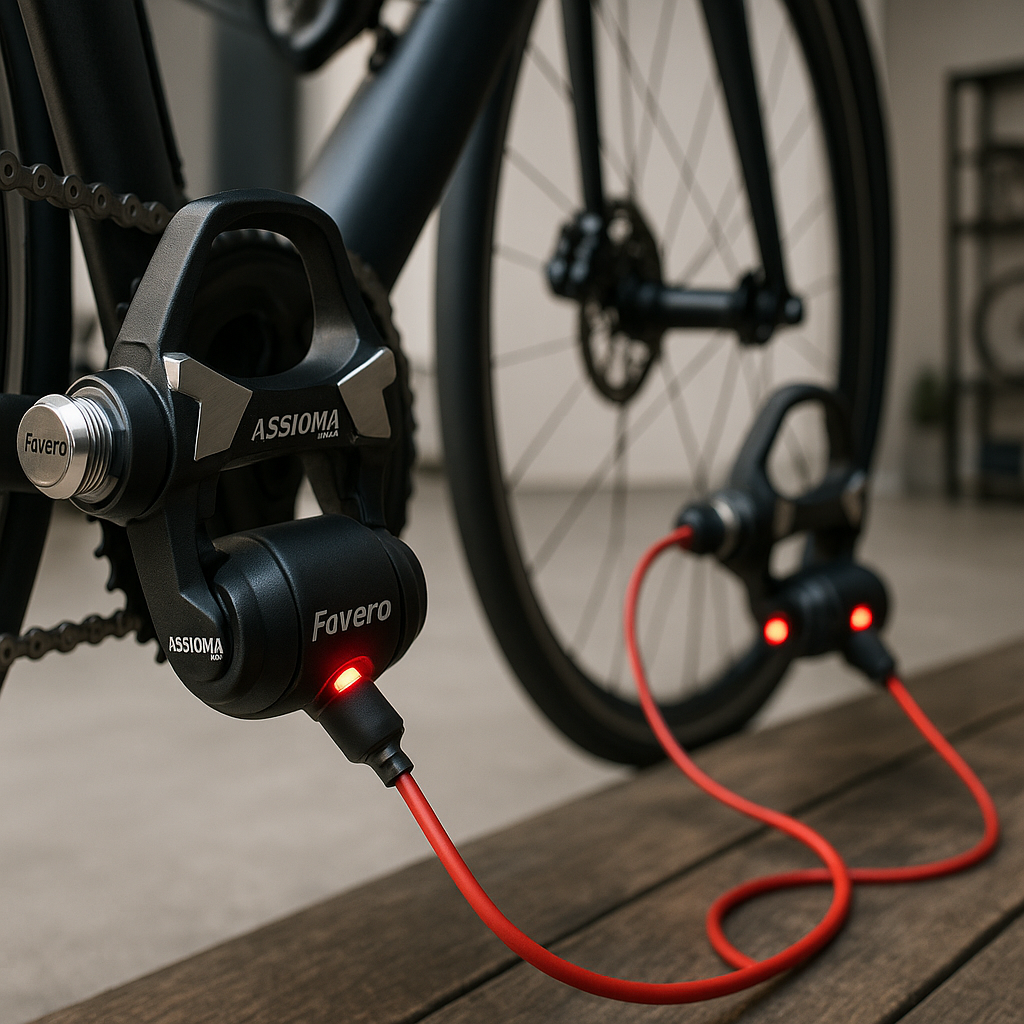
There’s nothing worse than getting your bike ready for a ride — tires pumped, bottles filled — only to realize your Favero Assioma pedals are running on low battery.
Don’t worry, though. These pedals were built with both convenience and endurance in mind, and recharging them is easier (and faster) than you might think.
Let’s break down how long it actually takes to charge them, how much ride time you get per charge, and a few pro tips to make charging even smoother.
How Long Does It Take to Fully Charge Assioma Pedals?
Favero officially rates the Assioma UNO and DUO pedals with a charging time of around 2 hours for a full charge.
That’s from empty to 100%, using the standard Favero magnetic USB charging cable included in the box.
Here’s a simple overview:
| Status | Charging Time | Ride Time (Approx.) |
|---|---|---|
| 0% → 100% | ~2 hours | ~50 hours of riding |
| 30-minute quick charge | ~25%–30% | ~10–15 hours of riding |
So, if you’re about to head out for a long weekend ride and your pedals are blinking low, just 30 minutes of charging will easily get you through several training sessions.
The built-in LED indicators on each charging cable make it foolproof:
Red light = Charging
Green light = Fully charged
When the light turns green, you’re ready to roll.
Charging Setup – Magnetic, Simple, Foolproof
One of the smartest things Favero did was ditching fragile ports for a magnetic charging connector.
That means:
- No exposed metal contacts
- No risk of water or sweat corrosion
- No fumbling with tiny ports in the dark
You just snap the magnetic cable to the pod, and it clicks into place securely.
The pedals even charge safely while still on the bike — so there’s no need to remove them or bring out tools.
Most cyclists just plug them in right after a ride and let them top off while they cool down.
It’s about as effortless as it gets.
How Long Does a Charge Last While Riding?
Once fully charged, the Favero Assioma pedals deliver an impressive 50 hours of ride time on a single charge.
To put that in perspective:
- That’s roughly 2–3 weeks of daily training for most riders.
- For occasional weekend cyclists, it could last a full month or more between charges.
And when the battery does finally run low, you’ll get plenty of warning — the LED light on the pedal will start flashing red well before it dies, giving you ample time to recharge.
Unlike some power meters that lose calibration or data if the battery drops mid-ride, the Assioma’s internal battery management is rock solid. Even at low levels, accuracy stays consistent.
Quick-Charging Tips and Best Practices
If you want to keep your pedals in top condition and never get caught off guard, here are a few practical tips:
1. Charge both pedals at the same time: The dual magnetic cable makes this easy — both connect to a single USB port, so you don’t need two chargers.
2. Avoid deep discharges: Try not to let the battery run completely flat before charging. Topping up regularly helps maintain long-term battery health.
3. Use a quality USB power source: Any standard 5V USB charger works fine, but avoid ultra-high-speed or non-regulated power banks. A laptop or standard phone charger is perfect.
4. Store them partially charged if not riding for a while: If you’re taking an off-season break, store the pedals at around 50% charge and in a dry environment.
5. Don’t worry about overcharging: The internal circuitry stops charging automatically when full, so it’s safe to leave them plugged in overnight.
How You Know They’re Charging Properly
When you connect the charger, the LED on the cable (not on the pedal) gives you feedback:
Red Light: Charging in progress
Green Light: Fully charged
No Light: Check your USB source or cable connection
If you ever notice inconsistent behavior, a quick wipe of the magnetic contacts with a clean cloth fixes most issues. Dirt, grease, or sweat can interrupt the connection.
Charging in the Real World
Cyclists love the Assioma system because it fits real life.
You don’t need a charging dock, you don’t need to take your pedals off, and the cables are compact enough to toss in your travel bag.
Many riders simply plug them in after their weekend long ride and forget about it — by the time they’re ready to ride again, the LEDs are green, and the pedals are good for another 50 hours.
Even touring cyclists who spend days on the road can top them up from a USB power bank between stops — a lifesaver when you’re far from outlets.
Final Thoughts
The Favero Assioma pedals are one of the most low-maintenance power meters on the market.
They charge quickly, last a long time, and make it nearly impossible to mess up the process.
Two hours of charging for 50 hours of riding is a ratio most cyclists would dream of — and with the magnetic system, you’ll never deal with broken ports or finicky connectors again.
So next time you see that blinking red light, just snap on the cable, grab a post-ride coffee, and by the time you’re done, your pedals will be ready for another week on the road.





